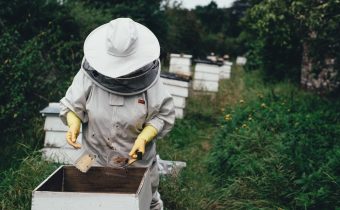
By Lucy Wyndham
The US is hungry for sustainable food. Between 2008 and 2014, local food sales grew from $5 billion to $12 billion and are estimated to increase to $20 billion by 2019, according to research from Packaged Facts. The reasons for the high demand are numerous: local food is fresher, tastes delicious, and is better for the environment — or is it? Local food is often lauded as a no-fail way of reducing our carbon footprint, but, in reality, this isn’t always the case. It’s time to clear up a couple of sustainable food myths and take a realistic look at how sustainable local food really is.
Local food and your carbon footprint
Many people buy local to minimize transportation fuel and carbon dioxide emissions which contribute to climate change. The average food product travels an incredible 1500 miles to get from the farm to your plate, after all. But while buying local does reduce transportation emissions, they only account for one tenth of the total carbon footprint created by agriculture. Production comprises the rest, which includes: methane from cattle and rice fields, emissions released by deforestation, and nitrous oxide from over-fertilized fields. It’s therefore a huge myth that buying local minimizes the impact on climate change by lowering transportation emissions. Surprisingly, food transportation in corporate farms is more fuel-efficient anyway — regardless of distance traveled — since they process such large quantities.
Moreover, fresh food is perishable meaning food loss is always a real risk. If the supply chain is flawed on either local or corporate farms, food loss will occur. As a result, the total water, land, energy, and pesticides used to produce the food ultimately goes to waste. Local food doesn’t necessarily reduce food waste if transport, storage, packaging, and speed aren’t efficient.
The importance of polyculture
While not perfect, local food is, of course, beneficial in other important ways. Small, local farms — particularly organic farms — use fewer pesticides and fertilizers. They also grow a variety of fruits and veggies with polyculture systems. Alternatively, large-scale, corporate farming tends to be monoculture: large areas planted with one single crop. Polyculture is far more sustainable than monoculture as it uses less land and water, protects against diseases, and increases biodiversity. Most importantly, polyculture preserves a large agricultural gene pool which ensures a wide variety of crops keep growing long into the future.
Protecting your local pollinators
Buying local honey is a great way to support local agriculture and help the environment. Bees pollinate a third of the world’s food supply, including strawberries, cucumber, broccoli, almonds, avocados, melon, and peaches — just to name a few! But, unfortunately, these helpful creatures are on the decline, which is why beekeeping is such an essential sustainable practice. Supporting your local beekeeper helps crops get pollinated, increases yields, and results in higher quality crops.
Ultimately, local farm practices are better for the environment for the most part — just not really where transportation emissions are concerned. Buying local also supports your local farmers and protects crop diversity essential for the world’s future food security. You can therefore buy local feeling good about your choice while knowing it isn’t always perfect.

One comment